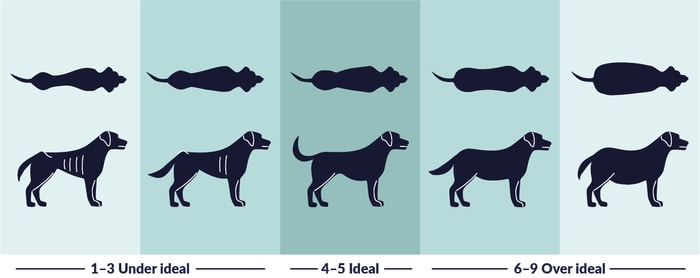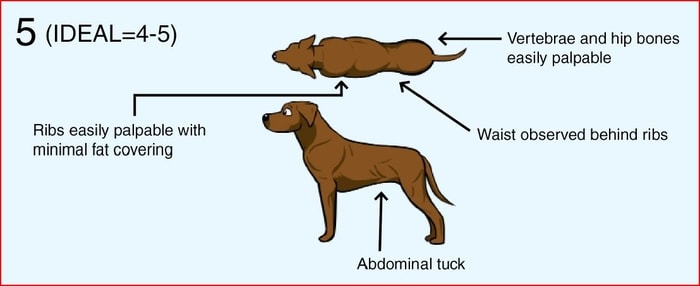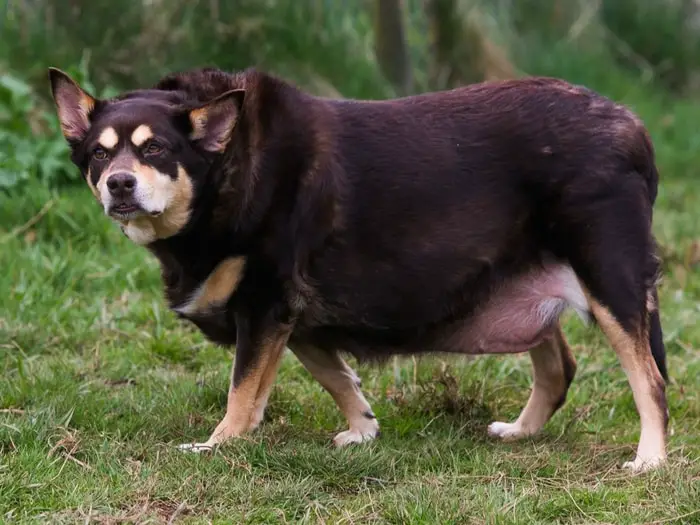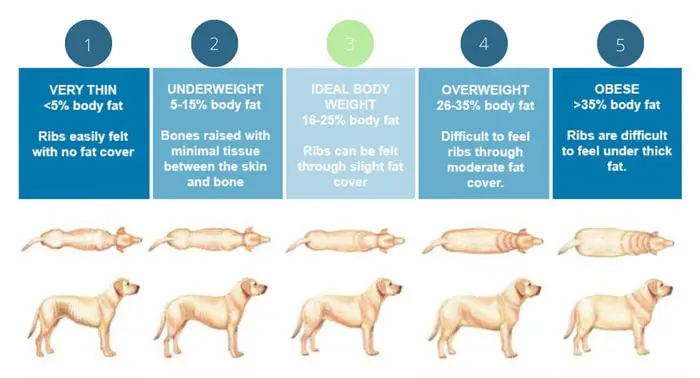Visual assessment of dogs and cats can be standardized using a body condition scoring (BCS) system for practicing veterinarians and dog owners. Several systems are available to your practitioners and your dogs, all of which involve qualitative ranking of dog body condition score based upon visual assessment and palpation. The two most common systems of dog BCS are using either five points (a score of 3 corresponds to the ideal body condition) or nine points (a score of 5 corresponds to the ideal body condition).
What are Dog Body Condition Scores?
Clinical experiments have shown that body scoring systems provide a highly reliable method for diagnosing obesity and predicting percent body fat. Comparing body condition data collected using Dual-energy X-ray absorptiometry (DEXA) with body condition assessments using a nine-point represents significant and affirmative correlations between body condition scores and percent body fat in both your dogs and cats. The five-point scoring system of dog BCS typically includes half-point assessments; the two scales are, in practice, very similar.

Dog BCS: 1 Thin
- The ribs, lumbar vertebrae, and bones of the pelvic region are visible at a distance and felt without pressure.
- No palpable fat over tail base, spine, or ribs.
- Diminished muscle mass.
- Extreme concave abdominal tuck when viewed from the side.
- Several hourglass shapes when viewed from above.

Dog Body Condition Score: 2 Underweight
- Ribs palpable with little pressure may be visible.
- Minimal palpable fat over ribs, spine, tail base.
- Increased concave abdominal tuck when viewed from the side.
- Marked hourglass shape to the waist when viewed from above.

Dog BCS: 3 Ideal
- Ribs and spine palpable with a slight pressure but not visible, no excess fat covering.
- Ribs can be seen with the motion of the dog.
- Good muscle tone apparent.
- Concave abdominal tuck when viewed from the side.
- Hourglass shape to the waist when viewed from above.

Dog BCS 4: Overweight
- Ribs palpable with increased pressure, not visible, and have excess fat covering.
- Ribs are not seen with the motion of the dog.
- General hefty appearance.
- Abdominal concave tuck is reduced or absent when viewed from the side.
- Loss of hourglass shape to waist with the back slightly broadened when viewed from above.

Dog BCS 5: Obese
- Ribs and spine not palpable under a heavy fat covering.
- Fat deposits are visible over the lumbar area, tail base, and spine.
- Loss of hourglass shape to the waist.
- Complete loss of abdominal tuck with the rounded abdomen.
- The back is markedly broadened.

Limitations of Body Condition Scoring System in Dogs
The two limitations of BCS systems are that their subjectivity can lead to wide interobserver variation, and some training in morphological metric assessments may be needed. Recently, a seven-point assessment system has been developed that provides an easy-to-use flowchart and set of diagrams for you. However, this system still requires standardization studies to determine if it effectively identifies overweight and obese pets.

Concluding Remarks on Dog Body Condition Score
In my article, I will give you a clear idea for measuring your dog’s body condition score. You must remember that when you measure your dog’s Body Condition Score at home should not replace going to see your vet. You ask your vet for the scoring system, and your vet gives you a detailed scoring chart for your dog. Thank you for your time.